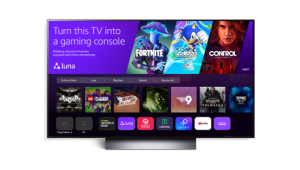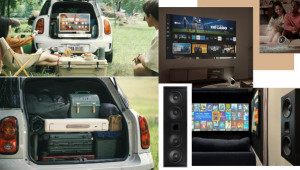The Doors Released on DVD
In an updated version of the Mickey Rooney/Judy Garland "Hey, let's put on a show!" scenario, Oliver Stone gives us a cartoonish scene early in The Doors in which it takes but a few short moments for the newly formed group, working from a rough Robby Krieger idea, to create a fully formed "Light My Fire," complete with Ray Manzarek's classic keyboard intro. Yeah, right.
If you expect a movie centered on what it means to make music---or on The Doors, for that matter---you'll be disappointed with Stone's hyper-impressionistic look at the life and times of Jim Morrison, played to eerie perfection by Val Kilmer in one of the truly underrated performances of the decade. Kilmer becomes Morrison, singing all his own on-camera performances (backed by the original instrumental tracks) in a voice indistinguishable from the real Lizard King, who died in Paris in 1971. Background Doors tracks feature the real Morrison.
But I recommend that you let yourself sink into the swirl of the early- to late-'60s imagery that Stone skillfully re-creates, allow for the exaggerated conflicts necessary to build dramatic tension in any good movie scene, and excuse some of the cookie-cutter '60s dialog and romanticization of the LSD experience. Stone's The Doors does for the "counterculture" what Coppola's Apocalypse Now did for the war in Vietnam, as Morrison floats down the polluted river of his own excesses into darkness and finally madness, escape, and death.
Stone diverts attention from what is basically a linear biography with two dramatic spurs: He has a bearded, tired Morrison sitting in a darkened recording studio telling his story flashback-style, and he has an old Indian who appears as Morrison's conscience (and eventually as a harbinger of his death). The Indian surfaces at pivotal points along Morrison's unlikely journey from military brat to Venice beach bum to UCLA film-school student (a scene in which Stone plays the film professor) to budding poet and death-obsessed rock star to overweight, overdrugged, overindulged, past-his-prime has-been.
Oliver Stone chooses his stopping points wisely in telling Morrison's story: the innocence of 1965 Venice Beach (with the Rivieras' simple-minded "California Sun" as musical backdrop), quitting film school, meeting his oft-abused wife Pamela (played convincingly by Meg Ryan), hooking up with the other talented but far more conventional Doors, making it big at the Sunset Strip clubs. Other stopping points include Morrison misbehaving on The Ed Sullivan Show, having an audience with a vampiric Andy Warhol (Crispin Glover) and an equally creepy Truman Capote (Paul Williams) at a decadent New York party, being too drunk and disconnected to sing "Touch Me" during the recording sessions for the group's weakest album (Soft Parade), and, of course, the climactic Miami concert where Morrison is falsely charged with exposing himself.
Stone can be forgiven for making it appear as if the Warhol party, indeed the "wicked" East Coast, sowed the seeds of the singer's ultimate descent into drinking and drugging. But his less than flattering portrayal of Morrison's journalist/girlfriend on the side, Patricia Kinneally (played by Kathleen Quinlan), contains more than a few inaccuracies. Stone later apologized, admitting that the character was an amalgam of many women in Morrison's life.
As explained in the excellent bonus production notes, Stone and cinematographer Robert Richardson used a Steadicam and Technocrane to immerse the filmgoing audience in the late-'60s rock-concert experience. These devices take the viewer through and around the crowd, panning in dizzying 360-degree turns (accompanied by very effective swirling sound pans) as a stupefied Morrison spins around on stage in a drunken trance. By today's polite concert standards, the Miami scene appears to be too far over the top to contain even a kernel of truth. But for those of us who were around then, on or off psychedelics, the Miami scene rings surprisingly true. You had to be there, I guess.
Finally, for audio buffs, the film is replete with vintage Ampex tape recorders and other '60s audiophilia, including what looks like a pair of legendary KLH electrostatic panel loudspeakers in the group's beachfront studio.
The letterboxed DVD transfer in the original theatrical aspect ratio is outstanding, with well-saturated colors and admirable overall clarity and detail. The Dolby Digital sound is typically crisp, clear, and dynamic, but hearing familiar music brightened, whitened, folded, mutilated, and stapled makes the limitations of this severely compressed format all too apparent. After viewing the film, I sought refuge in my basement music system and played DCC Compact Classics' recently reissued, all-analog vinyl versions of The Doors' first three albums. Now that's what Bruce Botnick's superb recordings are supposed to sound like.
























































